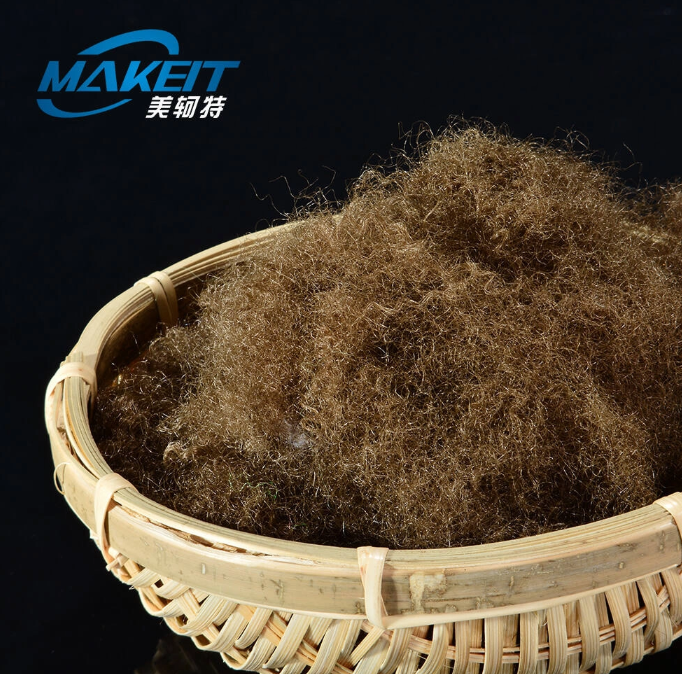- This topic is empty.
-
AuthorPosts
-
23/09/2025 at 15:58 #83364
When it comes to sustainable textile production, selecting the right fiber is crucial. Both viscose rayon staple fiber and polyester have unique properties, but understanding their environmental impact, performance, and applications can help manufacturers and designers make informed decisions. SuZhou Makeit Technology Co., Ltd, a leading producer of polyester and viscose fibers, provides insights into these two materials and how they align with modern sustainability goals.

Environmental Impact
Viscose Rayon Staple Fiber is derived from renewable wood resources, and modern production techniques, like closed-loop Lyocell processes, recycle almost all solvents, significantly reducing environmental footprint. The fiber is biodegradable, water-saving, and non-toxic, making it ideal for eco-conscious textile applications.
In contrast, polyester is petrochemical-based and non-biodegradable, contributing to microplastic pollution if not properly managed. While recycled polyester options exist, virgin polyester still relies heavily on fossil fuels, making it less sustainable than viscose rayon for environmentally focused production.
Comfort and Hand Feel
One of the main advantages of viscose rayon staple fiber is its exceptional comfort:
-
Softness: Smoother than cotton, providing a cool and comfortable feel against the skin.
-
Luster: Has a silk-like sheen, enhancing the aesthetic appeal of garments.
-
Warmth: Offers a plush, fine touch similar to wool, suitable for premium apparel.
Polyester, while durable, often lacks the natural softness of viscose rayon. Blending polyester with other fibers can improve hand feel, but pure polyester garments may feel less breathable and smooth compared to viscose-based fabrics.
Durability and Performance
Viscose rayon staple fiber performs impressively in both dry and wet conditions, with hook strength, breaking strength, and wet modulus comparable to polyester. It is well-suited for high-grade sportswear, fashion apparel, and blended fabrics, providing a balance of comfort and durability.
Polyester is inherently strong, resistant to stretching and shrinking, and quick-drying, making it suitable for performance and outdoor fabrics. However, its rigidity and lower breathability can limit comfort compared to viscose rayon in certain applications.
Application Suitability
-
Viscose Rayon Staple Fiber: Ideal for sustainable fashion, premium home textiles, and eco-friendly sportswear. Its biodegradable nature and luxurious hand feel make it a top choice for high-end and environmentally conscious markets.
-
Polyester: Best for industrial textiles, budget-conscious apparel, and outdoor or performance fabrics where durability and moisture resistance are prioritized.
Why Makeit Recommends Viscose Rayon for Sustainability
SuZhou Makeit Technology Co., Ltd develops viscose staple fibers, PLA fibers, and soybean protein fibers from renewable biomass resources, gradually replacing petrochemical-based fibers. By focusing on biodegradable, non-toxic materials, Makeit helps textile manufacturers meet modern sustainability standards while maintaining high-quality fabric performance.
Conclusion
Choosing between viscose rayon staple fiber and polyester depends on your sustainability goals and fabric requirements. For eco-friendly, biodegradable, and soft textiles, viscose rayon is the superior choice. Polyester remains relevant for high-durability and performance-oriented applications but carries a larger environmental footprint.
With Makeit’s advanced production capabilities, manufacturers can confidently select viscose rayon to achieve both sustainable practices and premium textile performance, supporting a shift toward greener, more responsible fashion and textile industries.
http://www.makeitfiber.com
SuZhou Makeit Technology Co.,Ltd -
-
AuthorPosts
- You must be logged in to reply to this topic.


